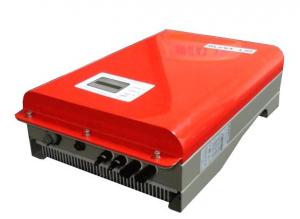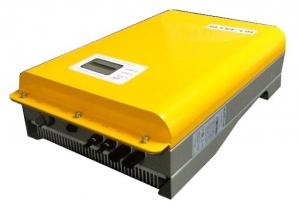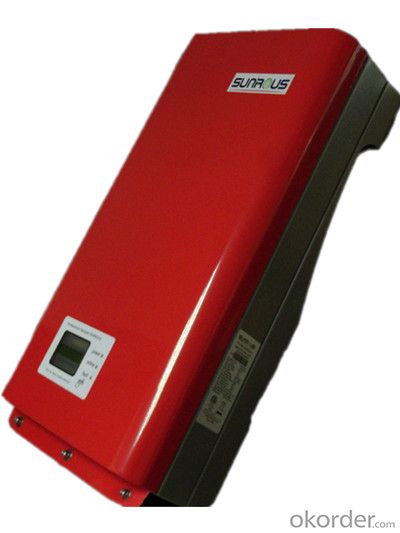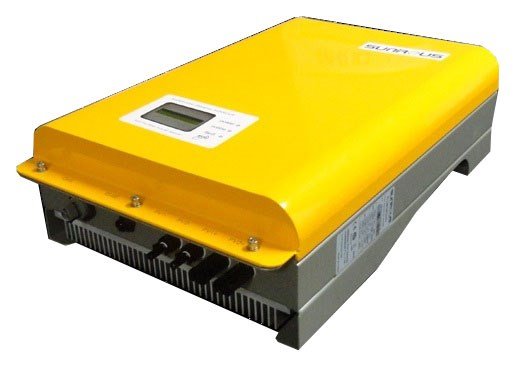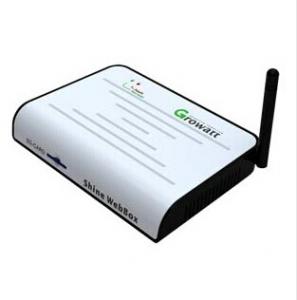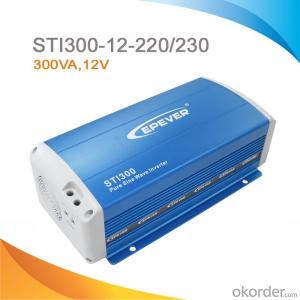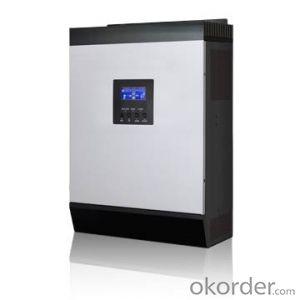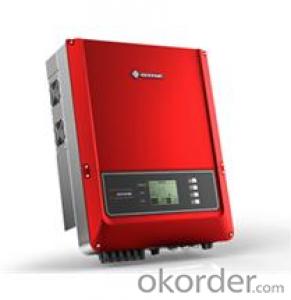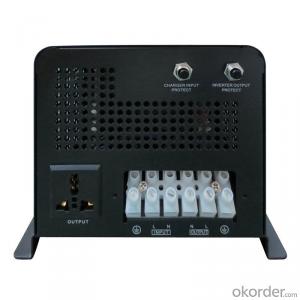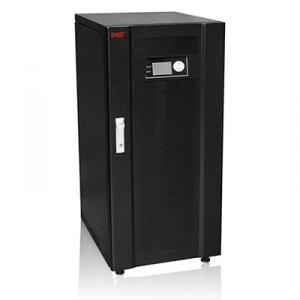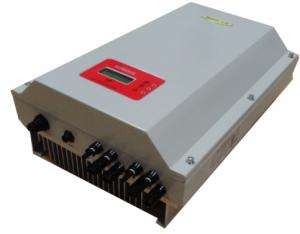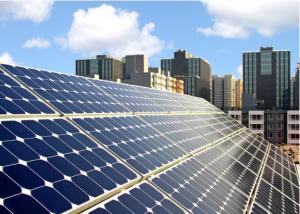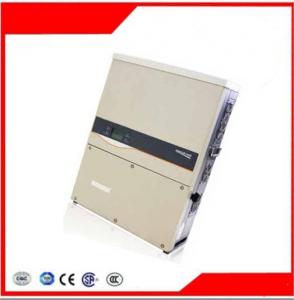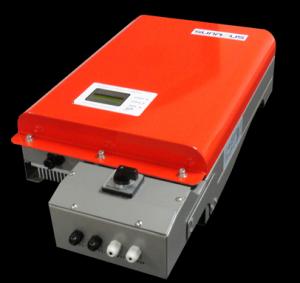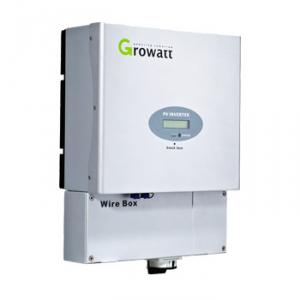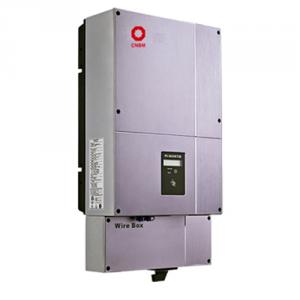Sukam Solar Inverter - Single Phase PV Grid-Tied Inverter for Solar System
- Loading Port:
- Shanghai
- Payment Terms:
- TT or LC
- Min Order Qty:
- 10 cm
- Supply Capability:
- 800 cm/month
OKorder Service Pledge
OKorder Financial Service
You Might Also Like
Single Phase PV Grid-Tied Inverter for Solar System
5 years warranty
·Sealing stainless steel shell, suitable for indoor or outdoor installation
·Using industrial frequency transformer in isolation,ensure system safety and reliability
·The highest efficiency achieves 94. 8% have satisfactory cosmetic
·Adopt connectors type cable connection, easy operation and installation
·With multiple independent MPPT channel function to ensure maximum photovoltaic system
capacity
·Has the active and passive double prevent island function
·Working temperature range - 25 to 50 ℃
LF series 0.6kw — 1.5kw
Features: Single stage inverter is the main characteristic of this product , in which power grade period compared with other topological structure has higher conversion effciency and reliability

LF series 2.0kw — 2.8kw
Features: Double channel input, and their respective independent of the MPPT function, make photovoltaic array installation is more fexible.

- Q: Can a solar inverter be connected to a battery storage system?
- Yes, a solar inverter can be connected to a battery storage system. This allows excess solar energy generated during the day to be stored in the batteries and used later when there is no sunlight, providing a reliable source of power.
- Q: Can a solar inverter be used with different types of backup power configurations?
- Yes, a solar inverter can be used with different types of backup power configurations. Solar inverters are designed to convert the DC power generated by solar panels into AC power that can be used to power electrical devices and appliances. They can be integrated with various backup power systems such as batteries, generators, or grid connections to provide uninterrupted power supply during periods of low solar generation or power outages. The versatility of solar inverters allows for flexibility in choosing and combining backup power sources based on specific needs and preferences.
- Q: Can a solar inverter be used with solar trackers?
- Yes, a solar inverter can be used with solar trackers. Solar trackers are used to maximize the efficiency of solar panels by orienting them towards the sun. Solar inverters are responsible for converting the DC power generated by solar panels into usable AC power. Both components work together to optimize solar energy production.
- Q: How does a solar inverter handle voltage regulation during fault conditions?
- A solar inverter handles voltage regulation during fault conditions by quickly detecting any abnormal voltage fluctuations or faults in the system. It then uses various protective mechanisms such as voltage control algorithms, circuit breakers, and fault detection systems to prevent overvoltage or undervoltage situations. The inverter may also isolate itself from the grid to avoid any potential damage or safety hazards.
- Q: How does the input voltage rating affect the performance of a solar inverter?
- The input voltage rating is a critical factor in determining the performance of a solar inverter. The inverter's ability to convert the direct current (DC) generated by solar panels into alternating current (AC) for use in homes or businesses depends on the input voltage rating. If the input voltage rating of the inverter is not compatible with the voltage produced by the solar panels, the inverter may not function properly or may even be damaged. Thus, selecting an inverter with the correct input voltage rating is essential for optimal performance and longevity of a solar power system.
- Q: Is it possible to upgrade my existing solar inverter without replacing the entire system?
- Yes, it is possible to upgrade your existing solar inverter without replacing the entire system. In some cases, you may be able to replace the inverter with a more advanced model that offers improved efficiency or additional features. However, it is important to consult with a professional to ensure compatibility and proper installation.
- Q: Can a solar inverter be used with a solar-powered agricultural irrigation system?
- Yes, a solar inverter can be used with a solar-powered agricultural irrigation system. A solar inverter is responsible for converting the direct current (DC) electricity generated by solar panels into alternating current (AC) electricity that can be used to power various devices and systems, including irrigation systems. By connecting a solar inverter to the solar panels within an agricultural irrigation system, the generated solar energy can be efficiently utilized to power the irrigation pumps and other components, enabling a sustainable and environmentally-friendly solution for agricultural irrigation.
- Q: What is the standby power consumption of a solar inverter?
- The standby power consumption of a solar inverter refers to the amount of power that the inverter consumes when it is in standby mode or not actively converting solar energy into usable electricity. This power consumption is generally very low, typically ranging from 1 to 5 watts, as the inverter only needs to maintain its internal circuitry and monitor the solar energy availability.
- Q: How does a solar inverter synchronize with the electrical grid?
- A solar inverter synchronizes with the electrical grid by constantly monitoring the grid's voltage and frequency. It adjusts its own output voltage and frequency to match those of the grid, ensuring seamless integration and safe operation. This synchronization process allows the solar inverter to feed power into the grid and maintain grid stability.
- Q: Can a solar inverter be used with different types of energy management systems?
- Yes, a solar inverter can be used with different types of energy management systems. Solar inverters are designed to convert the direct current (DC) produced by solar panels into alternating current (AC) that can be used in various electrical systems. They can be integrated with different energy management systems, such as battery storage systems, smart grids, or even hybrid systems that combine solar power with other renewable energy sources. This flexibility allows for efficient and optimized utilization of solar energy in different setups and applications.
Send your message to us
Sukam Solar Inverter - Single Phase PV Grid-Tied Inverter for Solar System
- Loading Port:
- Shanghai
- Payment Terms:
- TT or LC
- Min Order Qty:
- 10 cm
- Supply Capability:
- 800 cm/month
OKorder Service Pledge
OKorder Financial Service
Similar products
Hot products
Hot Searches
Related keywords
